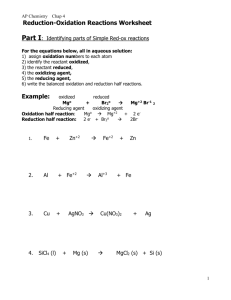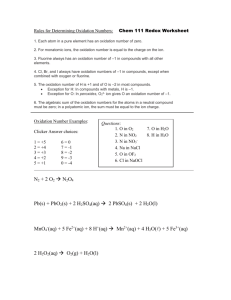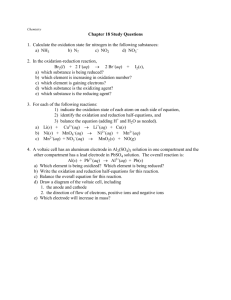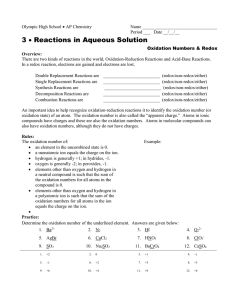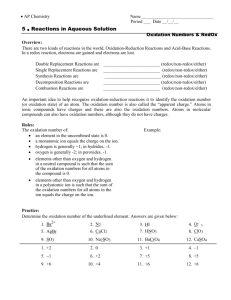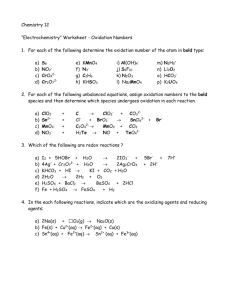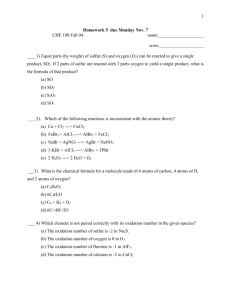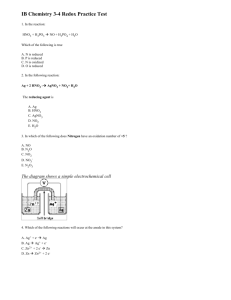Redox Reactions Worksheet: AP Chemistry Practice
advertisement
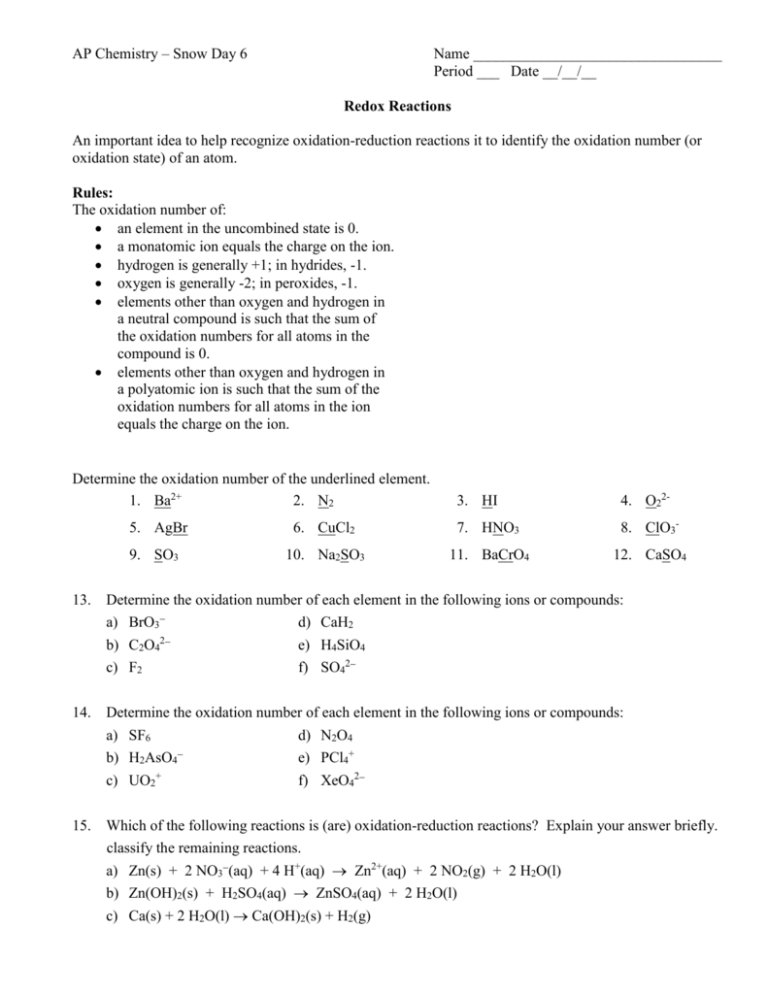
AP Chemistry – Snow Day 6 Name _________________________________ Period ___ Date __/__/__ Redox Reactions An important idea to help recognize oxidation-reduction reactions it to identify the oxidation number (or oxidation state) of an atom. Rules: The oxidation number of: an element in the uncombined state is 0. a monatomic ion equals the charge on the ion. hydrogen is generally +1; in hydrides, -1. oxygen is generally -2; in peroxides, -1. elements other than oxygen and hydrogen in a neutral compound is such that the sum of the oxidation numbers for all atoms in the compound is 0. elements other than oxygen and hydrogen in a polyatomic ion is such that the sum of the oxidation numbers for all atoms in the ion equals the charge on the ion. Determine the oxidation number of the underlined element. 1. Ba2+ 2. N2 3. HI 4. O22- 5. AgBr 6. CuCl2 7. HNO3 8. ClO3- 9. SO3 10. Na2SO3 11. BaCrO4 12. CaSO4 13. Determine the oxidation number of each element in the following ions or compounds: a) BrO3 d) CaH2 2 b) C2O4 e) H4SiO4 c) F2 f) SO42 14. Determine the oxidation number of each element in the following ions or compounds: a) SF6 b) H2AsO4 c) UO2+ 15. d) N2O4 e) PCl4+ f) XeO42 Which of the following reactions is (are) oxidation-reduction reactions? Explain your answer briefly. classify the remaining reactions. a) Zn(s) + 2 NO3(aq) + 4 H+(aq) Zn2+(aq) + 2 NO2(g) + 2 H2O(l) b) Zn(OH)2(s) + H2SO4(aq) ZnSO4(aq) + 2 H2O(l) c) Ca(s) + 2 H2O(l) Ca(OH)2(s) + H2(g) 16. Which of the following reactions is (are) oxidation-reduction reactions? Explain your answer briefly. classify the remaining reactions. a) CdCl2(aq) + Na2S(aq) CdS(s) + 2 NaCl(aq) b) 2 Ca(s) + O2(g) 2 CaO(s) c) Ca(OH)2(s) + 2 HCl(aq) CaCl2(aq) + 2 H2O(l) 17. In each of the following reactions, decide which reactant is oxidized and which is reduced. Designate the oxidizing agent and reducing agent. a) 2 Mg(s) + O2(g) 2 MgO(s) b) C2H4(g) + 3 O2(g) 2 CO2(g) + 2 H2O(g) c) Si(s) + 2 Cl2(g) SiCl4(l) 18. In each of the following reactions, decide which reactant is oxidized and which is reduced. Designate the oxidizing agent and reducing agent. a) Ca(s) + 2 HCl(aq) CaCl2(aq) + H2(g) b) Cr2O72(aq) + 3 Sn2+(aq) + 14 H+(aq) 2 Cr3+(aq) + 3 Sn4+(aq) + 7 H2O(l) c) FeS(s) + 3 NO3(aq) + 4 H+(aq) 3 NO(g) + SO42(aq) + Fe3+(aq) + 2 H2O(l)

